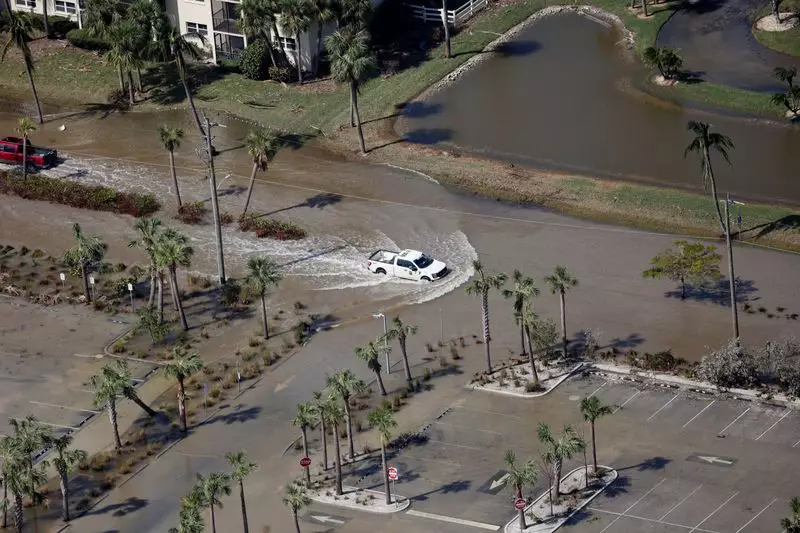Hurricane Milton carved its name into the history of Florida’s climatic adversities, unleashing a chaotic mixture of destruction and survival on Wednesday night. As it made landfall along the state’s west coast, it initially wreaked havoc with Category 3 winds of up to 120 mph. Fortunately, it had lessened in intensity from its earlier Category 5 status, a change that, while promising, did not end the state’s ordeal. A deadly trail of tornados emerged alongside heavy rainfall, ultimately producing a storm that instigated tragedy with a reported death toll of at least ten.
The aftermath speaks to Milton’s power and unpredictability, reminding residents of Florida’s vulnerability to natural disasters. With over 3.2 million structures left in the dark due to a power outage, the infrastructure of an entire state faced an immediate crisis. Such a magnitude of disruption places enormous strain on emergency services and rehabilitation efforts, leading one to question whether Florida’s emergency response mechanisms are prepared for such inevitable catastrophes.
While it is a relief that the feared storm surge did not materialize, Governor Ron DeSantis and other authorities still express concern regarding other forms of damage and acute flooding. In areas like the Tampa Bay region, the anticipated catastrophic surge instead found expression in severe flooding of barrier islands, showing that even when one risk is mitigated, others loom imminently. This situation sheds light on the multifaceted nature of hurricane impacts, where even what appears as a stroke of luck can contort into another kind of risk.
The storm brought its most insidious devastation with the generation of at least 27 tornados. In St. Lucie County, the impact was devastating, particularly on vulnerable communities such as senior living facilities, highlighting a stark social reality often overlooked—those with limited mobility suffer the most during crises. Survivors, like Crystal Coleman and others who sheltered from the wrath, have feelings of disbelief resonating in their stories. It’s a relentless reminder that the power of nature respects neither human efforts for safety nor societal structures designed for protection.
Individuals across the state showcased an undeniable spirit of resilience, quickly responding to the storm’s onset as they navigated their impending reality. Steven Cole Smith’s experiences encapsulate this phenomenon; despite the terrifying atmosphere, he and his wife opted against evacuating due to fears of getting caught in a more dangerous situation elsewhere. Their choice speaks volumes about the emotional and psychological weight faced by residents during storms. The adage “better the devil you know” seems poignant as many Floridians grapple with risk assessment while understanding the unpredictability of nature.
Ken Wood’s plight serves as another testament to the innate instincts for survival. His choice to evacuate with his feline companion illustrates the eclectic ways individuals reckon with potential disasters. Evacuations, although essential, can carry negative consequences, such as stranded individuals or further treacherous conditions en route to safety. The very act of fleeing becomes a gamble fraught with uncertainty and fear, casting a shadow over the notion of “safe havens.”
The days following Hurricane Milton will be pivotal as recovery efforts commence. Despite FEMA’s reassurances about the importance of evacuation orders, the reality is stark. Surviving such disasters doesn’t translate to immediate healing; recovery can take months, if not years. The aftermath reveals the tragic truth: recovery is layered with complexities like insurance woes, rebuilding efforts, and emotional scars that are often underrepresented in media coverage.
President Biden’s suggestion for Congress to reconvene highlights the importance of legislative action in times of crisis. Disasters illuminate the fragility of our systems, and without timely interventions and resources, recovery can morph from a temporary setback into an everlasting struggle.
The magnitude of Hurricane Milton leaves us with critical lessons in preparedness, resilience, and the unpredictable nature of our climate. As Florida takes stock of the aftermath, its narrative resonates not just as a tale of devastation, but as an ongoing story of human spirit, communal strength, and the relentless pursuit to recover and rebuild in the face of overwhelming odds. **The fight against nature’s wrath continues, but in unity, there lies hope.**

